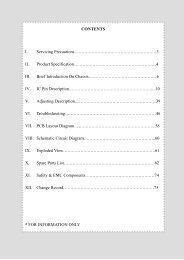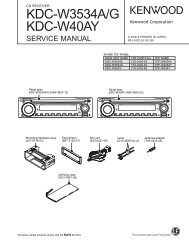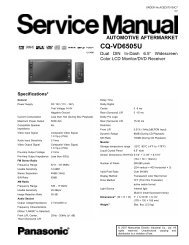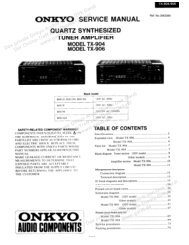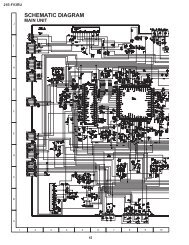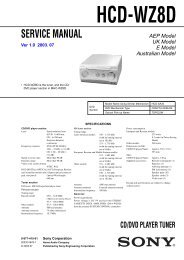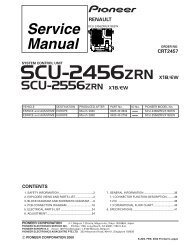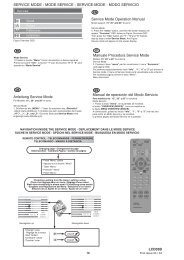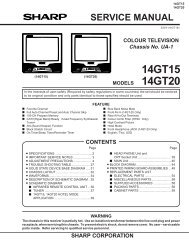Technology of Q 2500 colour TV set
Technology of Q 2500 colour TV set
Technology of Q 2500 colour TV set
Create successful ePaper yourself
Turn your PDF publications into a flip-book with our unique Google optimized e-Paper software.
<strong>Technology</strong> <strong>of</strong> Q <strong>2500</strong> <strong>colour</strong> <strong>TV</strong> <strong>set</strong>2 Basic boardThis main heading covers the analoguestages from the power supply circuit throughthe power output stages to beam current limitation,irrespective <strong>of</strong> whether or not they arecontained on the basic board. In order tomaintain consistency, several smaller stageson the basic board are also described.2.1 Standby power supplyThe Q <strong>2500</strong> receiver once again contains astandby power supply circuit, thus limiting currentconsumption in this mode to < 2 Watt.The use <strong>of</strong> a new CCU SDA 6000 on the signalboard increases the standby power consumptionfrom 1 W to 2 W, compared to theolder model. To meet the requirements <strong>of</strong> increasedpower consumption, there is now asmall, blocking oscillator type power supplyattached to the operating control, which suppliesthe U5 SB.Siemens Corporation has announced a newindex <strong>of</strong> the SDA 6000, that needs only 1 Wpower in standby operation. This will be implementedon the signal board, but thestandby power supply will not be changed.mode. All <strong>of</strong> this contributes to the standbymode’s low power consumption.2.1.1 Standby power supply circuitThe main voltage is fed via W 8103 the switchS 8101 and W 8611 to the basic board andcontinues via the line filter (C 612, T612,C613) and the 3-pole pin connector W613/BBback to pin 2/3 <strong>of</strong> operating control W 8613.The 220V is rectified by the bridge rectifier D8133 and smoothed by C 8133. The blockingoscillator type power supply consists essentially<strong>of</strong> the control circuit I 8131, in which theswitching transistor for the primary blockingoscillator winding is integrated, the transformerT 8101 and the opto-coupler I 8122. Anoperating voltage <strong>of</strong> about 18V is led fromwinding T 8101 pin1/2 via D 8138/D 8131 andC 8132 to I 8131 on pin 4. Control input I 8131pin 3 is supplied with secondary side currentcontrol information by opto-coupler I8122.This control circuit stabilises the secondaryside output voltage derived from the windingpin 5/8 <strong>of</strong> T 8101 at 5V. This is then fed via W8181 pin 8 to the signal board. I8122 is fittedwith an internal excess temperature, excesscurrent and excess voltage switch protection.The blocking oscillator type power supply operatesat a switching frequency <strong>of</strong> about 50kHz.The circuit itself is mounted together with theIR receiver and the LEDs on its printed circuitboard. It supplies the U5 SB, which maintainsfunctioning <strong>of</strong> the IR detector, the processorcircuit and the operating s<strong>of</strong>tware. The lasttwo circuits operate in standby mode, i.e. theclock frequency is reduced internally so thatonly those stages required to recognize aswitch-on command are maintained in operation.Because <strong>of</strong> the Nex<strong>TV</strong>iew function with U3.3 the <strong>TV</strong> RAM is retained in self refreshDocument Q <strong>2500</strong> 12 © Loewe ProCollege



